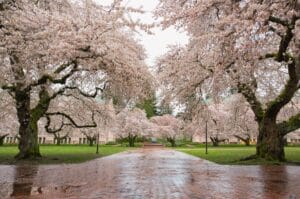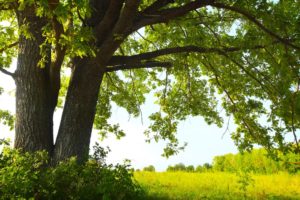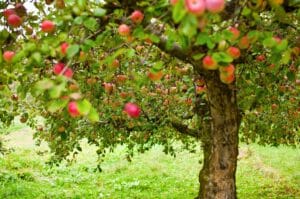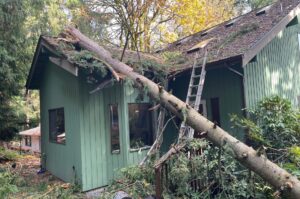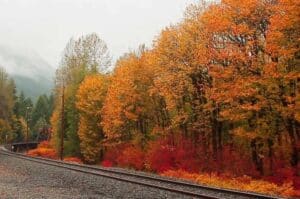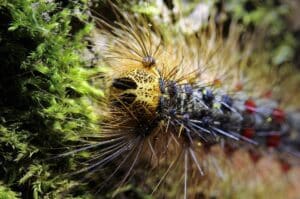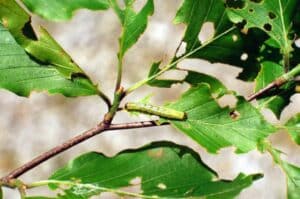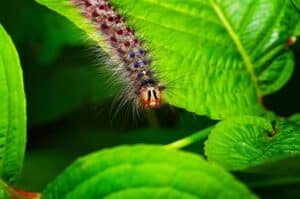The Emerald Ash Borer is Heading to Seattle
The emerald ash borer is an invasive ash tree pest heading toward Seattle. As it devastates ash trees across the country, people ask the same questions. When will EAB arrive in Seattle, what can we do to stop it, and how can we protect our ash trees before it arrives?
A threat is headed toward the Seattle area, and it’s coming for your ash trees. While the emerald ash borer (EAB) hasn’t shown itself in Washington state yet, the signs are evident as the beetle makes its way across the United States.
While some promising treatments are available, it’s impossible to stop the spread of this tree pest completely. People have many questions about the signs of EAB, and that’s why it’s essential to familiarize yourself with the following:
- The signs of emerald ash borers
- The traits of emerald ash borers
- How the emerald ash borer was introduced to the United States
- How the emerald ash borer spreads
- How to identify the emerald ash borer
- Recognizing damage caused by the emerald ash borer
- Chemical and biological controls used to fight emerald ash borers
- What you can do to prevent emerald ash borers
Understanding these critical points regarding the emerald ash borer is crucial in preventing its devastating effects as the invasive EAB continues to expand its range.
What is the Emerald Ash Borer?
The emerald ash borer (EAB) is a beetle, specifically Agrilus planipennis, of the family Buprestidae.
These metallic-looking wood-boring beetles are collectively known as “jewel beetles.” Though many people find them beautiful, emerald ash borers are invasive tree pests that must be dealt with.
The emerald ash borer is native to Asia and was first spotted in the US and Canada in 2002. However, it’s believed that it was first introduced sometime in the 1990s.
In its native Asia, the beetle only affects dead ash trees, and its numbers are kept in check by a native parasitic wasp. However, with no native predators in North America, EAB has wiped out tens of millions of living ash trees in the US and Canada since being introduced.
Considered one of the most destructive insect pests in the United States, it’s estimated that costs for the prevention and control of EAB will reach tens of billions of dollars over the next few decades. It’s worth mentioning that the beetle has been known to affect not only ash trees but also olive and white fringe trees.
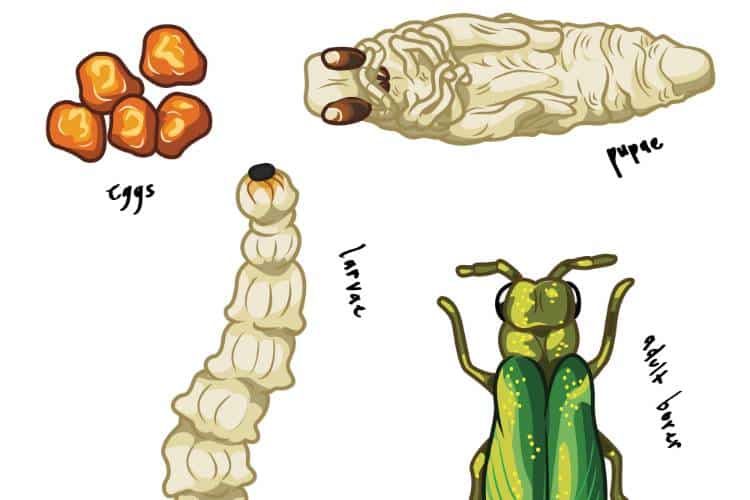
How Emerald Ash Borers Attack Ash Trees
Female emerald ash borers lay their eggs on the bark of ash trees, the favorite food of their offspring. The larvae bore into the bark upon hatching, where they feed and grow. This feeding cuts off the nutrient flow in the tree, making it unable to transport the water and nutrients it needs to survive.
Untreated, infested ash trees will die in 3-5 years.
While this seems like a grim fate, there are options for controlling EAB. Early identification and preventive treatment are the most efficient ways to save your ash trees.
How the Emerald Ash Borer Spreads
Without help, the emerald ash borer can move about a mile each year. That might seem like a slow pace, but the fact remains that new ash trees are becoming targets of this pest every year.
Additionally, people are unknowingly helping EAB in their migration.
The larvae can survive when a tree’s been cut, so the transport of firewood, building materials, and other untreated ash products facilitates the movement of emerald ash borer. This “free ride” allows them to spread more quickly than they ever could naturally.
In 2021, the USDA removed a federal quarantine related to the transport of ash firewood and logs. As a result, some states have instituted their own quarantine measures to slow the spread. However, untreated products are still transported over state lines and contribute to the spread of emerald ash borers.
While not yet spotted in Washington state, the EAB is listed as a priority invasive species by the Washington Invasive Species Council due to the potential devastation to Washington’s forests and riparian areas.
Washington residents are strongly discouraged from transporting untreated wood, including firewood, into the state. Additionally, Washington residents are encouraged to contact the council if they spot EAB.
Though Seattle is safe for now, the emerald ash borer has been identified in neighboring Oregon (see the blue area on the map below). As a result, in December 2022 Oregon enacted a quarantine in Washington County, limiting the movement of ash, olive, and white fringe plant parts from the county.
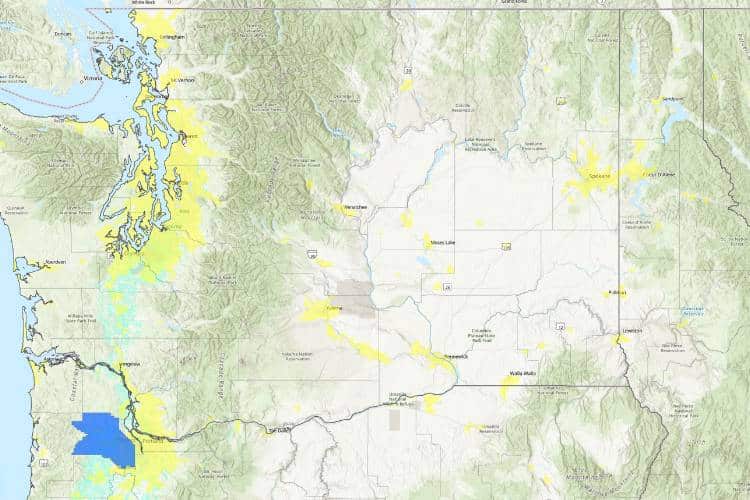
When will EAB arrive in Seattle?
Although we cannot know the exact time that emerald ash borers will be spotted in Seattle, we know it’s a matter of “when” rather than “if” it will be found here. The US Department of Agriculture keeps an updated, interactive map of known EAB infestations throughout the USA. The most recent update shows the area around Puget Sound, including Olympia, Tacoma, Seattle, and Everett, being a likely target (see the area in yellow on the map above). Emerald ash borer spreads quickly in urban areas, making it even more important to keep a close eye on your ash trees for any potential signs of infestation.
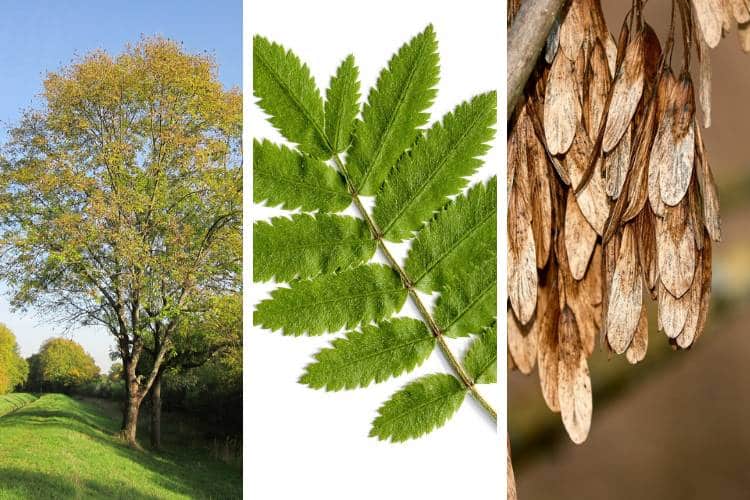
Mature ash trees can be identified by their overall size and shape, distinctive leaflets, and canoe-shaped samaras (seeds).
Signs Emerald Ash Borers are Attacking Your Trees
In addition to spotting the emerald ash borer itself, there are physical signs you can look for when determining if your trees have been affected. However, you first want to be assured that you are looking at the right tree.
Identifying Ash Trees in Washington State
The Oregon ash (Frazinus latifolia) is the only ash tree native to the pacific northwest. These trees are generally identifiable by the following characteristics:
- A narrow, dense crown arising from a single straight trunk
- Branches grow directly across from one another on the trunk
- Each leaf is comprised of 5-7 oval leaflets
- The leaves are medium to light green on the top side and paler green and slightly hairy below
- The fall leaf color is yellow or brown
- Fruits are dry, single-winged seeds (samaras) that are shaped like canoes
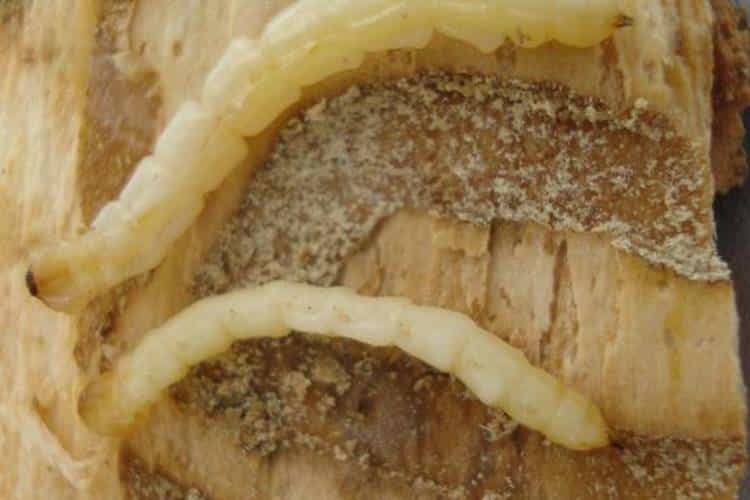
Emerald ash borer pupae feeding. Image used courtesy of: Kenneth R. Law, USDA APHIS PPQ, Bugwood.org
Identifying Emerald Ash Borers and the Damage They Cause
Like all insects, emerald ash borers have a multi-phase life cycle. The following is what you should look for to identify the emerald ash borer through each stage of its development.
Emerald Ash Borer Eggs
EAB eggs are hard to spot because of their small size and because they are deposited into small crevices within the bark. Newly laid eggs are generally a creamy white color. Older eggs are reddish-brown. Remove the eggs by hand if you see them.
Emerald Ash Borer Larvae
The larvae feed on the sapwood below the ash tree’s bark and are impossible to spot unless the bark is removed. The larvae grow from 1 to 1 and 1/2 inches long. They are creamy-white with a faint green tint.
Adult Emerald Ash Borers
Adults are one-half inch in length and are a brilliant metallic green in color. They have metallic red abdomens on their underside and behind the wing covers. Adults leave a distinctive d-shaped hole in the bark when they emerge.
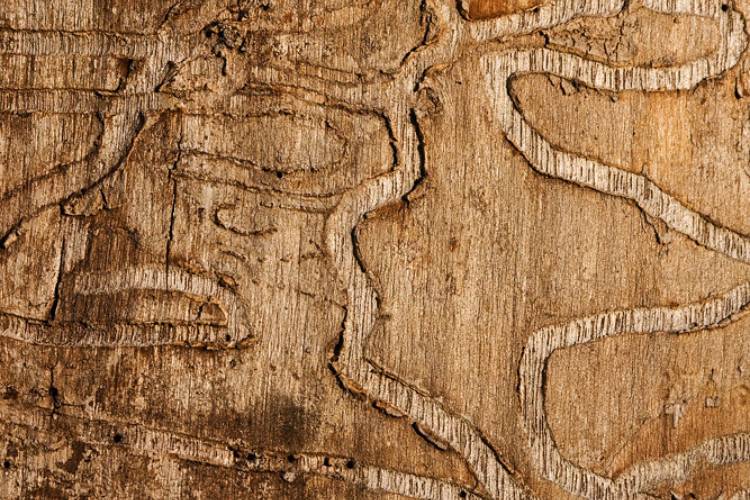
Emerald ash borer larvae leave a distinctive zigzag pattern on the trunk just beneath the bark. The s-shaped galleries grow wider and deeper as the larvae grow.
Identifying Emerald Ash Borer Damage
Once a tree has been attacked by borers, the damage becomes apparent. Many tree pests and diseases can damage your trees, so it’s important to know what to look for.
Thin Crown
Since the emerald ash borer feeding affects the tree’s xylem, nutrients cannot reach the canopy. This results in a reduced, thin crown. This thinning reduces photosynthesis, preventing energy storage and reducing carbon dioxide and oxygen exchange.
Green Shoots Growing from the Trunk
These epicormic shoots don’t always occur, but when they do, they’re a sign of an intense attack. These shoots are also known as suckers, water sprouts, or witches’ brooms. This growth indicates a tree is struggling to survive; it generates epicormic shoots in an attempt to increase leaf surface area.
Bark Deformities
These deformities manifest as splitting bark and vertical cracks. Another example of bark damage is the D-shaped exit holes fully mature adults create when they emerge from the tree.
Feeding Galleries Under the Bark
The larvae feed under the bark on the tree’s sapwood, creating a zigzagging “s” pattern, which becomes more prominent as the larvae grow. A single area showing a larva’s feeding pattern is called a “gallery.” These patterns are visible when a tree’s bark is removed.
Increased Animal Activity
Increased eggs, larvae, and emerging adults result in increased feeding activity by woodpeckers and other animals.
While this activity is good for reducing the number of emerald ash borers, it causes additional damage to the tree tissue and bark. This can leave vulnerable ash trees open to infections and disease.
How to Get Rid of Existing Emerald Ash Borers
After identifying emerald ash borers, we can begin dealing with them effectively. Prevention is the best way to keep your ash trees safe from EAB, but natural migration and accidental introductions make it impossible to protect every tree.
However, that doesn’t mean we can’t care for affected trees.
Preventive Soil and Trunk Injections for EAB
The most effective treatment for emerald ash borers is a soil injection with a targeted insecticide that is taken up by the tree roots or injecting it into the trunk and allowed to transfer throughout the tree.
Seattle Tree Care offers both soil and trunk injections for EAB prevention. To be effective, they must be applied at the correct time in the pest’s lifecycle, which is why timing is so important. Our arborists carefully evaluate the situation to determine the best time to apply preventive treatments.
There are two options for EAB soil injections:
- a springtime application that is effective for one year
- an application in the spring and summer that is effective for three months
Trunk injections are administered during the summer and are effective for two years.
Biological Controls Targeting Emerald Ash Borer
Research is currently being done to develop biological controls – mainly using a parasitoid wasp native to Asia. This wasp is a natural enemy of the emerald ash borer in its home region and has been an effective control method in experimental trials.
While promising, this biological control is not yet at the scale necessary to combat the massive emerald ash borer problem in the United States and Canada.
Insecticides Used Against the Emerald Ash Borer
Currently, the only preventive treatments involve chemical pesticides. These treatments have proven effective, but they must be reapplied every 1-3 years to maintain their efficacy.
There are currently four active ingredients used to defend against emerald ash borers:
Imidacloprid
Imidacloprid is one of the most convenient chemical controls for combatting emerald ash borers. Applied to the soil as a drench, the chemical is taken up by the tree’s roots.
Residual Imidacloprid can harm other plants, so any flowers at the tree’s base must be removed during treatment. Mulch must be removed to avoid contamination. This treatment takes 2-3 weeks to become effective.
Dinotefuran
Dinotefuran is applied to the tree’s trunk and is effective for a single season. It can be applied to the soil, but this method is often cost-prohibitive for the average homeowner. Dinotefuran is not available as a consumer product and requires a professional to mix and apply it at the proper concentration.
Applying Dinotefuran at the right time of year is crucial since using it too early can reduce concentration when the emerald ash borer is most active.
Emamectin Benzoate
Emamectin Benzoate is a pesticide treatment applied by injecting the tree’s trunk. This method requires a professional to ensure proper chemical concentration and to avoid damaging the tree.
This treatment has been shown to protect trees against emerald ash borers for two years and, in some cases, is effective for up to three years. Sometimes called a “rescue treatment” for affected trees, Emamectin Benzoate has been shown to allow partial canopy repair and grow back.
Azadirachtin
This naturally sourced insecticide is made from the seeds of the neem tree. It is applied through an injection in the trunk and requires a professional application.
Azadirachtin is typically applied annually and is particularly effective against late-stage larvae.
Seattle’s Future with Emerald Ash Borers
While the emerald ash borer may seem like an unstoppable foe, environmental scientists are working on methods to combat it. Additionally, lawmakers and environmental groups are working to slow the spread of EAB through policy and education.
In the end, effectively fighting any insect pest comes down to early identification and treatment. Whether it’s damage from the emerald ash borer or another pest, prevention and early intervention are our trees’ greatest chance of surviving pest attacks.
When a premium is put on prevention, it allows us to act before a tree has been compromised.
Protect Your Valuable Ash Trees With EAB Treatments
With the destructive emerald ash borer nearing Seattle and surrounding areas, homeowners and arborists are gearing up to get ahead of it and save our beautiful ash trees.
As the saying goes, “An ounce of prevention is worth a pound of cure.” EAB treatment is best when applied preventively. If you have ash trees on your property, contact the certified arborists at Seattle Tree Care now for an assessment and quote for preventive treatment to minimize the risk of emerald ash borers killing your trees. Spring and early summer are the best time to treat your ash trees.
Recent Articles
Looking for More?
We've got you covered with tips, resources, updates, how-to's, and other helpful information about trees and landscapes in Seattle, Puget Sound, and King County, WA. Join the thousands of smart local residents who get the monthly newsletter from Seattle Tree Care for helpful information you won't want to miss!
There's no spam - we promise! We are committed to keeping your e-mail address confidential. We do not sell, rent, or lease our contact data or lists to third parties.


